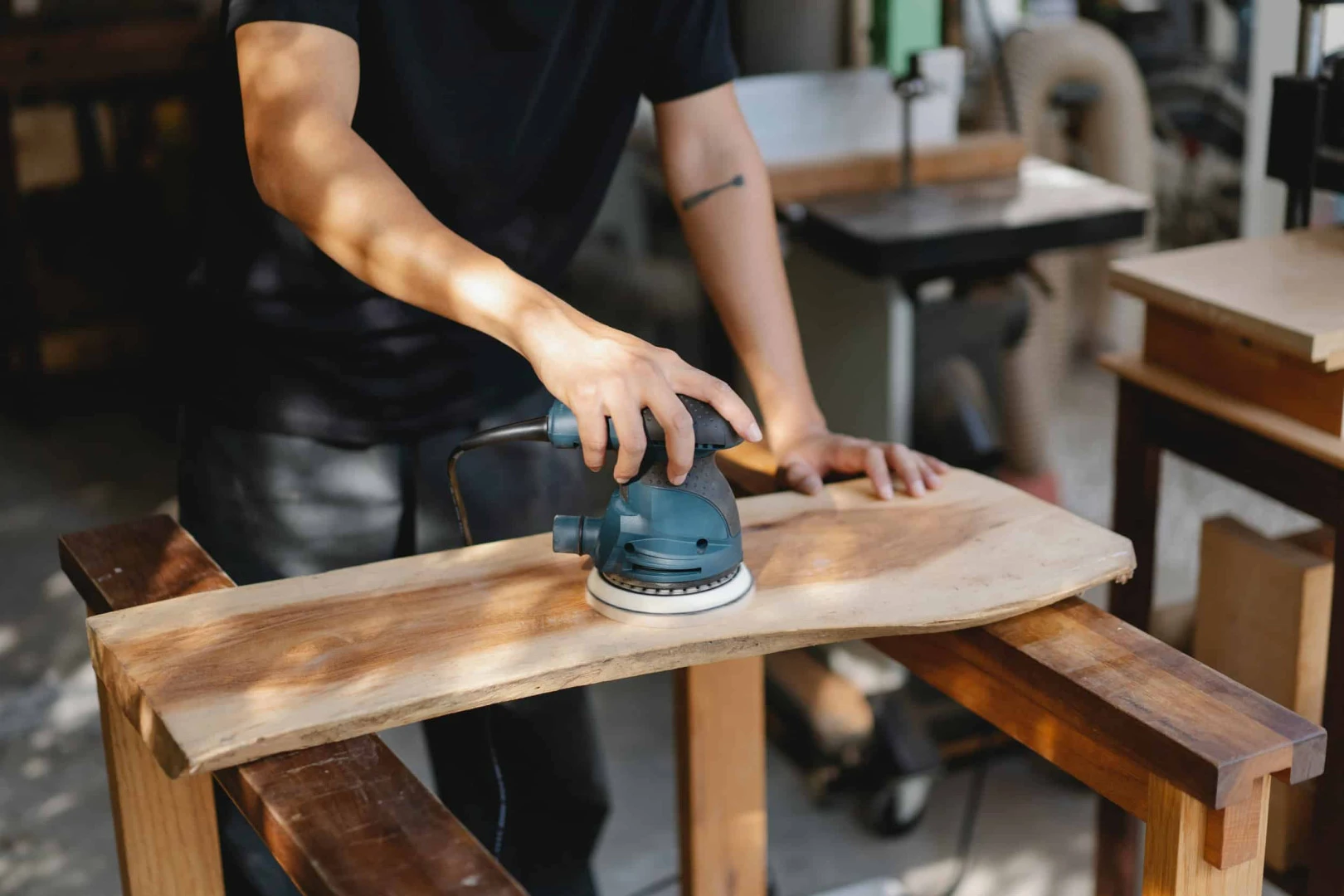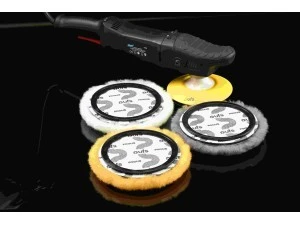
Lambswool polishing pad is an important material used in industrial and production processes for polishing and smoothing surfaces. These pads are especially preferred for achieving a perfect finish on surfaces made of materials such as metal, wood, glass, and ceramics. The usage areas of polishing pads are quite broad, and these pads are indispensable for increasing production efficiency, improving processing speed, and enhancing effectiveness. The use of polishing pads in industry and production not only improves surface quality but also provides cost efficiency. These pads are widely used in various industries and enhance the aesthetic value and durability of products. Additionally, polishing pads accelerate processing times, thereby increasing production capacities. Due to their positive effects on production efficiency and surface quality, polishing pads play a significant role in industry and production. Polishing pads, which improve the quality and appearance of products, have become an indispensable material in various sectors.
Applications of Polishing Pads in Industry
Polishing pads have a wide range of applications in the industrial and production sectors. These pads are widely used in various fields such as metalworking, the automotive industry, machinery production, woodworking, glass, and ceramics industries. Polishing pads, developed to meet the specific needs of each sector, play a significant role in polishing, smoothing, and finishing surfaces. Their industrial applications offer many advantages, such as increasing production efficiency, improving processing speed and effectiveness, enhancing surface quality, and reducing costs. According to the unique requirements of each sector, polishing pads ensure high-quality surfaces and enhance the aesthetic value of products. The widespread use of polishing pads in the industrial sectors contributes to the improvement of production processes and the enhancement of product quality. These pads offer an effective and economical solution for processing various surfaces.
Metalworking
The metalworking sector is one of the most common areas where polishing pads are used. These pads are used to remove imperfections on metal surfaces and achieve a shiny appearance. Especially in the automotive, white goods, and electronics sectors, metal polishing pads play a crucial role in the polishing processes of metal surfaces. The quality of metal surfaces directly affects the overall appearance and functionality of the product. Polishing pads provide high efficiency in the processes of smoothing and polishing surfaces in the metalworking sector. Polishing pads used in the production of metal parts enhance surface quality, increasing the aesthetic value and durability of products. Additionally, these pads are an effective solution for removing imperfections and achieving a shiny appearance on metal surfaces. The use of polishing pads in the metalworking sector ensures that production processes are more efficient and economical.
Automotive Industry
The automotive industry is a sector that requires high-quality surface finishing. Polishing the exterior and interior components of vehicles is critical for both appearance and durability. Polishing pads are widely used in the production and maintenance of automotive parts. Particularly effective in polishing chrome-plated parts and painted surfaces, these pads are indispensable in the automotive industry. Having smooth and shiny exterior surfaces of vehicles not only increases their aesthetic value but also provides protection against corrosion. Polishing the interior components makes the vehicle interior more appealing and comfortable. In the automotive industry, polishing pads enhance efficiency in production processes and provide cost savings. These pads also play an important role in quality control processes in the production of automotive parts. The automotive industry heavily uses these materials due to the high surface quality and efficiency advantages provided by polishing pads.
Machinery Production
In the machinery production sector, polishing pads are used to improve the surface quality of parts and enhance their functionality. These pads play a crucial role in obtaining smooth surfaces necessary for the efficient operation of machines. Particularly in the production of precision parts, the use of polishing pads increases product quality and durability. The smooth and shiny surfaces of machine parts enhance machine performance and extend their service life. Additionally, these pads provide compatibility and precision during the assembly of machine parts. In machinery production, polishing pads accelerate production processes, providing cost savings. These pads help achieve smooth and shiny surfaces on the production line. The use of polishing pads in machinery production increases production efficiency and enhances product quality. Polishing pads are used as a crucial material in the machinery production sector, especially in precision manufacturing processes.
Woodworking
In the woodworking sector, wood polishing pads are used for the processes of smoothing and polishing wooden surfaces. These pads are used in a wide range of applications, from furniture production to wooden decoration products. The smooth and shiny appearance of wooden surfaces enhances the aesthetic value and service life of the product. Polishing pads in the woodworking sector increase surface quality, enhancing the value of wooden products. In furniture production, polishing pads ensure that wooden surfaces are smooth and shiny. In wooden decoration products, these pads enhance the aesthetic appearance and durability of the products. The use of polishing pads in the woodworking sector increases the efficiency and speed of production processes. These pads are an effective and economical solution for polishing wooden surfaces. The use of polishing pads in the woodworking sector improves production processes by increasing surface quality and product value.
Use in Glass and Ceramics Industries
Polishing pads are also widely used in the glass and ceramics industries. These pads are used to enhance the brightness and smoothness of glass and ceramic surfaces. Especially in the production of ceramic tiles and glass products, polishing pads are preferred to improve surface quality. The bright and smooth appearance of glass surfaces increases the aesthetic value and service life of the products. In the ceramics sector, polishing pads improve the surface quality of ceramic tiles and other ceramic products. The use of polishing pads in the glass and ceramics industries increases the efficiency of production processes. These pads provide an effective and economical solution for the polishing of glass and ceramic products. Polishing pads improve production processes by enhancing surface quality and product value in the glass and ceramics industries. By enhancing the surface quality of glass and ceramic products, polishing pads increase their aesthetic value and durability.
Polishing Pads and Production Efficiency
Polishing pads play a significant role in increasing efficiency in industrial and production processes. These pads enable surfaces to be polished quickly and effectively, making production processes more efficient. High processing speed reduces production costs, saves time, and increases production capacity. Especially in sectors with mass production, the speed and effectiveness provided by polishing pads offer a competitive advantage. Shortening processing times allows more products to be processed on the production line. The durability and long lifespan of polishing pads ensure uninterrupted operation in production processes. Additionally, these pads can be used on different materials, which increases production flexibility. Polishing pads increase processing speed and effectiveness, making production processes more efficient and economical. The reduction in processing time and cost savings is a crucial factor in improving production processes.
Processing Speed and Effectiveness
Polishing pads play a crucial role in increasing processing speed and effectiveness. These pads allow surfaces to be polished quickly and effectively, making production processes more efficient. High processing speed reduces production costs, saves time, and increases production capacity. Especially in sectors with mass production, the speed and effectiveness provided by polishing pads offer a competitive advantage. Shortening processing times allows more products to be processed on the production line. The durability and long lifespan of polishing pads ensure uninterrupted operation in production processes. Additionally, these pads can be used on different materials, increasing production flexibility. Polishing pads increase processing speed and effectiveness, making production processes more efficient and economical. The reduction in processing time and cost savings is a crucial factor in improving production processes.
Impact on Surface Quality
The use of polishing pads significantly enhances surface quality. Smooth and shiny surfaces increase the aesthetic value and durability of products. High-quality surfaces increase customer satisfaction and elevate the market value of products. Polishing pads ensure surfaces are smooth, extending the service life of products. These pads remove micro imperfections on the surface and provide a perfect finish. Especially in the processing of delicate surfaces, the surface quality provided by polishing pads increases the performance and durability of products. Polishing pads contribute to improving production processes by enhancing surface quality. High-quality surfaces increase the visual appeal of products and provide a competitive advantage in the market. The positive impact of polishing pads on surface quality provides a significant advantage in production processes. Improving surface quality increases product value and customer satisfaction.
Cost Efficiency
The use of polishing pads helps reduce production costs. High efficiency and low material consumption make production processes more economical. Additionally, the long lifespan of polishing pads reduces the need for frequent replacement, which provides cost savings. Polishing pads operate with less material and energy consumption in production processes, lowering operating costs. These pads, which increase efficiency in production processes, enhance the competitiveness of businesses. Cost efficiency provides productivity and economic advantage in production processes. The cost efficiency of polishing pads makes production processes more economical and efficient. These pads increase profitability by reducing production costs. Polishing pads that increase efficiency and cost-effectiveness in production processes improve the competitiveness and market performance of businesses. Cost efficiency is a crucial factor in improving production processes and increasing business profitability.



